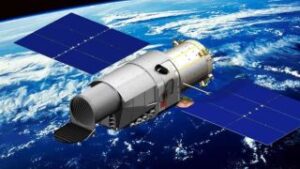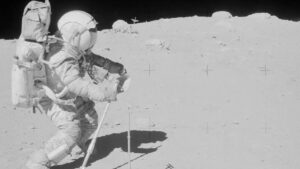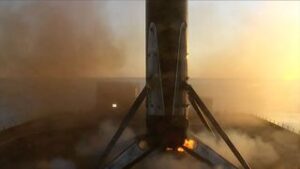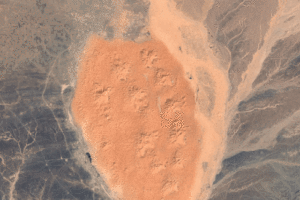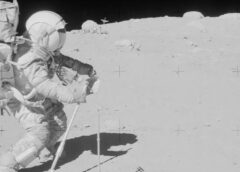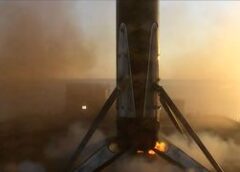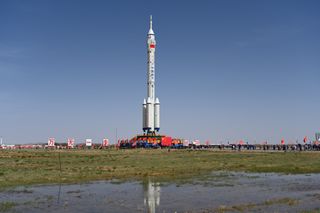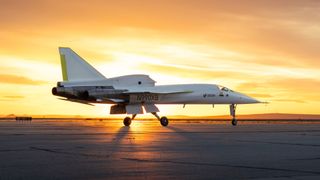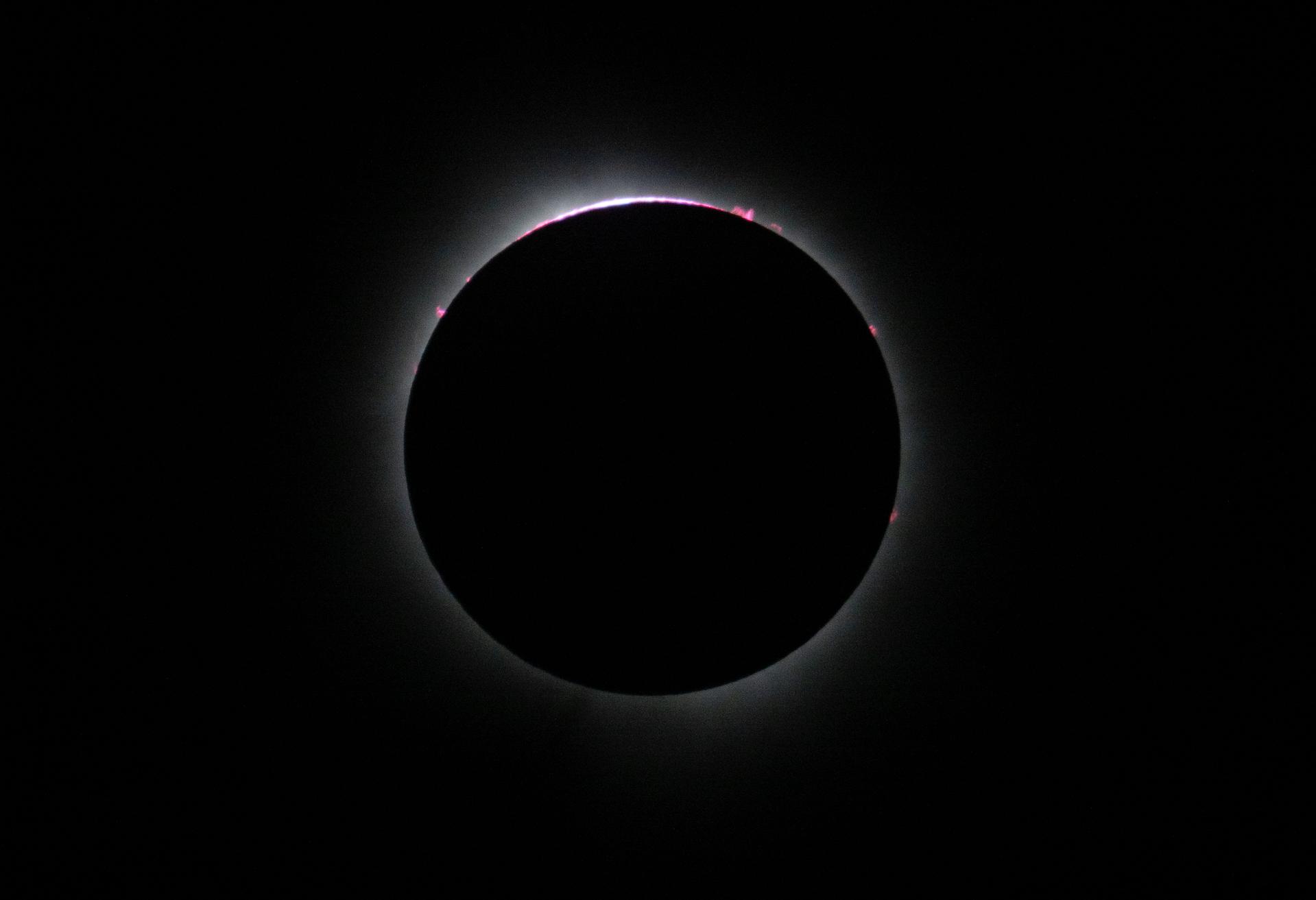China is all set to send its next crew to its Tiangong space station. The Shenzhou 18 spacecraft currently sits atop a Long March 2F rocket, on its pad at Jiuquan Satellite Launch Center. The rocket was transferred 0.93 miles (1.5 kilometers) by rail from the vertical integration building to the pad on April 17, according to China’s human spaceflight agency (CMSA). CMSA said Shenzhou 18 will be launched at an appropriate time in the near future. However, airspace closure notices indicate the launch to the Tiangong Space Station is…
Read MoreWater Touches Everything
The ocean holds about 97 percent of Earth’s water and covers 70 percent of our planet’s surface. According to the United Nations, the ocean may be home to 50 to 80 percent of all life on Earth. Even if you live hundreds of miles from a coast, what happens in the ocean is fundamental to your life. NASA/Jenny Mottar Real satellite imagery from NASA’s Terra, Aqua, and Landsat missions takes the shape of whales and swirling clouds in the agency’s Earth Day 2024 poster, “Water Touches Everything.” The major ocean…
Read MoreClimate Change Research
6 Min Read Climate Change Research The Kibo laboratory module from the Japan Aerospace Exploration Agency (comprised of a pressurized module and exposed facility, a logistics module, a remote manipulator system and an inter-orbit communication system unit) pictured as the International Space Station orbits over the southern Pacific Ocean east of New Zealand. Credits: NASA Science in Space: April 2024 Everyone on Earth is touched by the effects of climate change, such as hotter temperatures, shifts in rain patterns, and sea level rise. Collecting climate data helps communities better plan…
Read MoreOSDR hosts Blue Origin Erika Wagner
Open Science Data Repository Team Hosts Blue Origin’s Dr Erika Wagner at the Meet the Expert Seminar Series Focused on Flight Integrators Friday, March 29, 2024—The Open Science Data Repository hosted the sixth presentation showcasing flight integrators in the “Meet the Expert” series. This series is targeted for the Open Science Analysis Working Group (AWG) community to aide their space biology experiments. In this latest presentation, Dr Erika Wagner—a Senior Director of Emerging Market Development for Blue Origin—provided an introduction to Blue Origin, and how to participate in conducting microgravity…
Read MoreNASA’s TESS Returns to Science Operations
2 min read NASA’s TESS Returns to Science Operations NASA’s TESS (Transiting Exoplanet Survey Satellite) has returned to work after science observations were suspended on April 8, when the spacecraft entered into safe mode. All instruments are powered on and, following the successful download of previously collected science data stored in the mission’s recorder, are now making new science observations. Analysis of what triggered the satellite to enter safe mode is ongoing. The TESS mission is a NASA Astrophysics Explorer operated by MIT in Cambridge, Massachusetts. Launched in 2018, TESS…
Read MoreSweden becomes 38th country to sign NASA’s Artemis Accords for moon exploration
Another one signs the (moon) dust. Sweden is the newest nation to sign onto NASA’s Artemis Accords for peaceful and responsible exploration. During a signing event in Stockholm on Tuesday (April 16), Swedish Minister for Education Mats Persson penned the agreement alongside U.S. Ambassador Erik D. Ramanathan. “By joining the Artemis Accords, Sweden strengthens its strategic space partnership with the U.S. on space covering areas such as Swedish space research and the space industry, which in turn also strengthens Sweden’s total defense capability,” Persson said in a NASA statement. Related:…
Read MoreIngenuity team says goodbye to pioneering Mars helicopter
Saying goodbye is never easy, especially from a world away. The Ingenuity Mars helicopter team convened one last time on Tuesday (April 16) to oversee a transmission from the little rotorcraft, the first robot ever to explore the skies of a world beyond Earth. The meeting, in a control room at NASA’s Jet Propulsion Laboratory (JPL) in Southern California, came nearly three months after Ingenuity’s 72nd and final flight. The 4-pound (1.8 kilograms) chopper damaged its rotors while landing that day, consigning it to a stationary existence from now on…
Read MoreBoom’s XB-1 test plane gets FAA green light for supersonic flight
Like Tom Cruise’s “Maverick” character in “Top Gun,” Boom Supersonic is feeling the need for speed. The Colorado company has received a first-of-its-kind approval from the U.S. Federal Aviation Administration (FAA) to exceed Mach 1 during test flights of its XB-1 supersonic jet. These flights are slated to occur sometime this year within the Black Mountain Supersonic Corridor in Mojave, California. The sleek, delta-shaped XB-1 took its maiden flight on March 22, 2024 from the Mojave Air & Space Port, and now it’s free to go supersonic at Boom’s California…
Read MoreThe Marshall Star for April 17, 2024
18 Min Read The Marshall Star for April 17, 2024 The Full Experience: NASA, Marshall, and Arkansas Celebrate Total Solar Eclipse By Celine Smith More than 100,000 people from across the world gathered April 8 in Russellville, Arkansas, to witness an astronomical syzygy – the alignment of the Sun, Moon, and Earth – creating a solar eclipse with totality lasting 4 minutes and 12 seconds. Team members from NASA’s Marshall Space Flight Center and others traveled to Arkansas to provide educational opportunities related to the eclipse. Experts from NASA’s Stennis…
Read MoreSometimes Getting the Perfect Picture Really Is Rocket Science
NASA Engineer Cindy Fuentes Rosal waves goodbye to a Black Brant IX sounding rocket launching from NASA’s Wallops Flight Facility in Virginia during the total solar eclipse on April 8, 2024. The rocket was part of a series of three launches for the Atmospheric Perturbations around Eclipse Path (APEP) mission to study the disturbances in the electrified region of Earth’s atmosphere known as the ionosphere created when the Moon eclipses the Sun. The rockets launched before, during, and after peak local eclipse time on the Eastern Shore of Virginia.
Read More